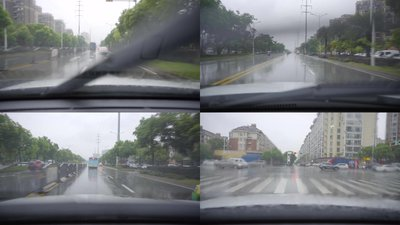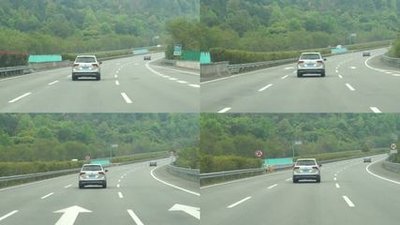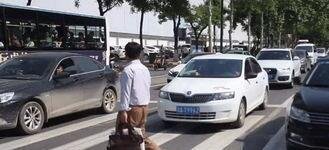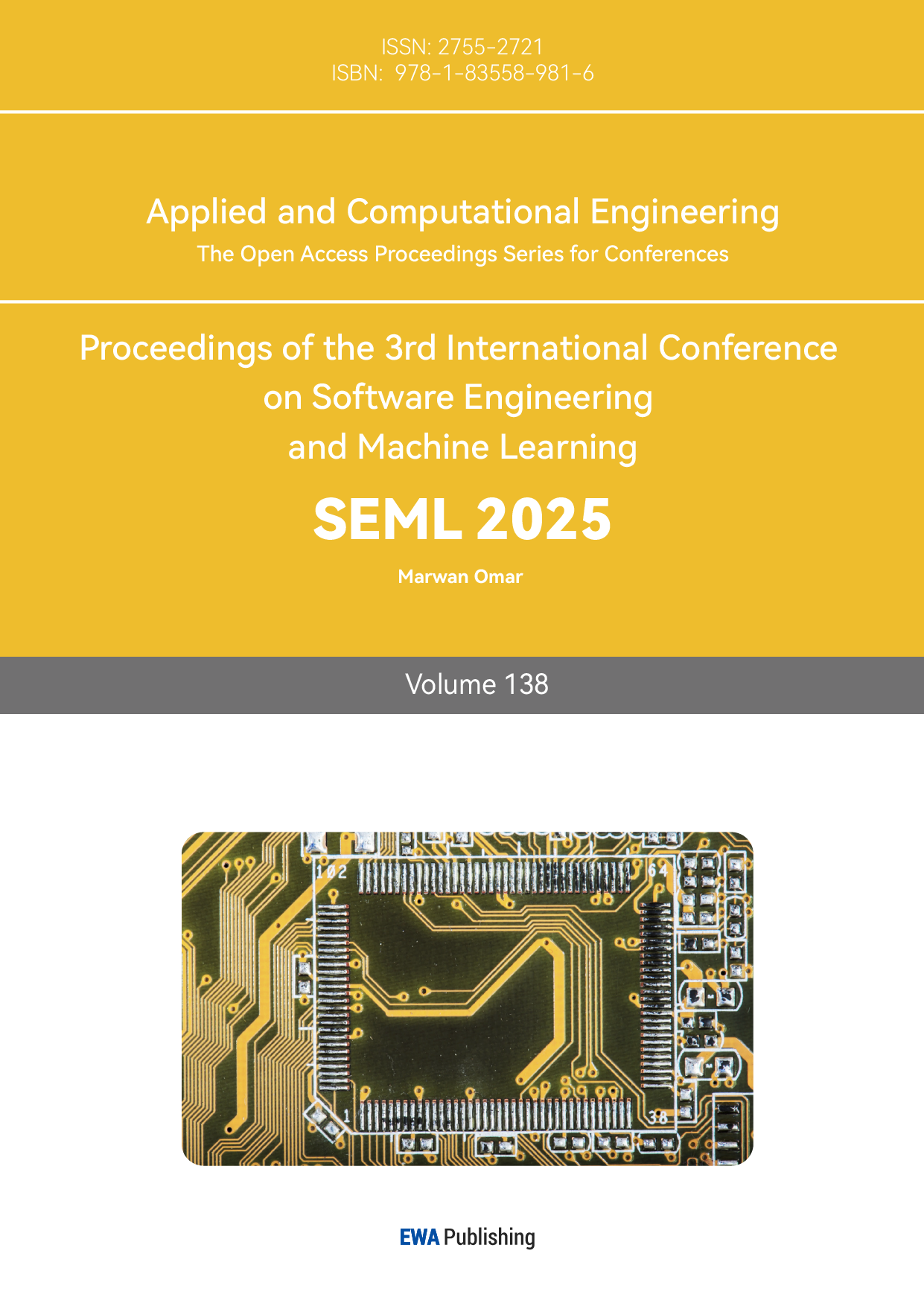1. Introduction
Lane marking detection technology has reached a mature stage in recent years, becoming a fundamental component of autonomous driving systems.[1] However, despite these advancements, achieving high accuracy remains a challenge in certain complex environments, such as those with poor weather conditions, intricate road geometries, and dynamic obstacles[2]. Previous studies have explored various theoretical frameworks and methodologies aimed at addressing these issues. For instance, researchers have proposed novel algorithms that leverage deep learning techniques to enhance the robustness of lane marking detection, demonstrating promising results in controlled settings[3]. Yet, when these systems are deployed in real-world scenarios, they often struggle to maintain the same level of accuracy due to the unpredictable nature of driving environments.
The significance of effective lane marking detection cannot be overstated, as it serves as a cornerstone for ensuring that autonomous vehicles can navigate safely and in compliance with traffic regulations[4]. Accurate interpretation of lane markings allows vehicles to make critical decisions regarding steering, acceleration, and deceleration based on the state of the road ahead[5]. In addition, lane marking detection plays a crucial role in collision avoidance and maintaining proper vehicle positioning, which are essential for the safe operation of autonomous vehicles[6]. As autonomous driving technology continues to evolve, the implications of reliable lane marking detection are profound, impacting not only the safety of individual vehicles but also the overall efficiency of transportation systems.
Furthermore, as the demand for autonomous driving solutions grows, so does the necessity for improved lane marking detection mechanisms that can operate effectively in diverse and challenging environments[7]. The integration of advanced detection technologies will play a crucial role in promoting the widespread adoption of autonomous vehicles, enhancing their usability in everyday driving scenarios[8]. For example, employing techniques such as convolutional neural networks (CNNs) and generative adversarial networks (GANs) can significantly improve detection accuracy in challenging conditions, as demonstrated by recent studies on attention mechanisms and contextual feature extraction.
In this paper, we will review the existing literature on lane marking detection, identify the key challenges that persist in complex environments, and propose innovative solutions that leverage state-of-the-art technologies. The structure of this paper is organized as follows: we first provide a theoretical overview of the current methodologies, followed by a detailed examination of the specific problems encountered in lane marking detection. Next, we will discuss potential solutions derived from theoretical simulations and experiments. Finally, we will conclude with a summary of our findings and their implications for future research, emphasizing the importance of continued innovation in this critical area of autonomous driving technology.
2. Complex Environment Analysis
In the task of lane detection for autonomous driving systems, complex environments present a significant challenge. Adverse weather and light conditions, intricate road geometries, and dynamic obstacles together form complex scenarios that the lane detection system must contend with. In these environments, the clarity and continuity of lane markings may be severely disrupted, making it difficult for traditional detection methods to be effectively applied. The following sections will analyze these three types of complex scenarios, detailing the specific conditions in each environment.
Table 1: Adverse Weather And Light Conditions.
Adverse weather and light conditions | weather | Rain | Heavy rain obscures lane markings by causing water accumulation on sensors and road surfaces. |
Snow | Snowstorms cover lane markings with snow or ice, making them indistinguishable. | ||
Fog | Fog reduces visibility and interferes with long-distance lane detection. | ||
light | Night | Low light conditions at night hinder camera visibility of lane markings. | |
Strong sunlight | Strong sunlight causes reflections on roads, confusing lane detection systems. | ||
Headlight glare | Headlight glare at night blurs lane markings and reduces detection accuracy. |
Adverse weather and light conditions refer to limitations in visibility or changes in road surface conditions caused by natural factors such as rain, snow, and fog. During heavy rainfall, water droplets may accumulate on the vehicle's windshield and sensors, blurring the view and making it difficult for cameras to capture lane markings clearly. In snowy conditions, accumulated snow may cover the road surface, obscuring the lane markings, or road lines may become indistinguishable due to snow or ice layers. Foggy weather, on the other hand, significantly reduces visibility, causing the vehicle's perception system to struggle with detecting lane markings at longer distances. In such weather conditions, both the visibility of lane markings and the stability of detection are severely challenged. In addition, strong light from the sun or vehicle headlights, as well as low light conditions at night, can blur lane markings, adversely affecting their detection.

Figure 1: Lane markings on rainy days.
Table 2: Intricate Road Geometries.
Intricate Road Geometries | Sharp Turns | Rapid curvature changes complicate trajectory adjustments. |
Continuous Curves | Long curves bend or overlap distant lane markings. | |
Steep Slopes | Elevation changes distort perspective and lane geometry. | |
Ramps | Lane width and shape variations hinder detection accuracy. | |
Complex Intersections | Lane crossing or merging complicates path parsing. |
Intricate road geometries refer to visual and perceptual challenges caused by road features such as sharp turns, slopes, intersections, and tunnels. During driving, vehicles may have to navigate through multiple complex road segments, where the shape and design of these segments often make it difficult to maintain the continuity of lane markings. For instance, on sharp curves, the lane markings may disappear or distort within a short time due to rapid changes in viewing angles; on slopes, the shape of the lane markings may become skewed due to changes in elevation, complicating detection. Intersections, especially those without clear lane markings, also increase the difficulty of lane detection. Inside tunnels, the sudden change in lighting conditions can drastically reduce the visibility of lane markings, particularly in transitional areas between tunnel entrances and exits.

Figure 2: Lane markings in intricate road geometries.
Table 3: Dynamic Obstacles.
Obstacles | Moving Pedestrians | Pedestrians may unpredictably enter the lane, disrupting real-time lane detection and path planning. |
Stationary Vehicles | Stationary vehicles block parts of lane markings, affecting local geometric data. | |
Temporary Signs | Road debris may mimic lane markings, confusing detection algorithms. |
Dynamic obstacles include pedestrians, cyclists, and other vehicles moving within or near the lane. Their unpredictable motion patterns and changing positions introduce additional challenges for lane detection systems. For example, when a pedestrian or cyclist crosses the lane, it may block the view of lane markings, temporarily interrupting the system’s ability to detect the lane boundary. Similarly, in busy traffic scenarios, nearby vehicles can obstruct lane markings, especially when driving at high speeds or when vehicles change lanes. These dynamic obstacles often create temporary gaps in the lane's visibility, further complicating the lane detection process.

Figure 3: Pedestrian obstacles in front of the vehicle.
3. Challenges
3.1. Unclear Lane Markings
Adverse environmental conditions, particularly extreme weather and lighting variations, significantly impair the clarity of lane markings, thereby hindering the effectiveness of lane detection systems. Rain obscures lane markings through water accumulation and reflections, while snow and ice can completely cover them, making them disappear and severely affecting visual recognition. Fog further reduces contrast, scattering light and making distant lane boundaries indistinguishable. Additionally, strong sunlight or glare from vehicle headlights can wash out lane markings, and low-light conditions at night make it even more difficult to identify lane markings, especially when they are worn or faint.
3.2. Curved Lane Markings
Road geometry often complicates lane detection, especially sharp curves and steep slopes, which lead to curved lane markings. Rapid changes in viewing angles or elevation skew the appearance of the lane markings, making them not straight and disrupting the continuity of the lane. Intersections and merging lanes alter or discontinue lane structures, further exacerbating the issue of curved lane markings, forcing detection systems to infer lane positions amidst incomplete or unclear information. These geometric challenges require adaptable solutions capable of tracking the continuity of curved lane markings despite constantly shifting perspectives.
3.3. Discontinuous Lane Markings
Obstructions on the road, particularly static and dynamic obstacles, lead to temporary interruptions in lane markings, making them discontinuous. Parked vehicles and construction barriers can completely obscure critical sections of the lane markings, while moving vehicles and pedestrians introduce intermittent disruptions, further breaking the continuity of the lane markings. Additionally, road debris or other irregular objects may cover or distort lane markings, making them discontinuous. These interferences require detection systems with robust predictive capabilities to maintain continuous tracking of lane markings despite temporary visual disruptions.
Table 4: Discontinuous Lane Markings.
Challenges | Challenge Description | Impact on Lane Detection | Algorithmic Solution |
Unclear Lane Markings | Rain: Water accumulation and reflections blur markings Snow/Ice: Covers markings entirely Fog: Reduces contrast and scatters light Strong Sunlight: Causes glare, washes out markings Headlights: Intense glare reduces visibility at night Low-Light/Nighttime: Insufficient illumination weakens clarity | Blurred or obscured lane markings reduce detection accuracy, making recognition unreliable in adverse conditions. | Multi-Sensor Fusion: Use data from LiDAR or radar to complement camera input. [9] Image Enhancement Models: Enhance clarity with deep learning for denoising and contrast adjustment.[10] |
Curved Lane Markings | Sharp Curves: Rapid angle changes distort lane markings Steep Slopes: Elevation changes skew markings Intersections/Merging Lanes: Lane boundaries merge or disappear, creating ambiguity | Distorted or missing lane markings disrupt continuity and make tracking more challenging, especially in intersections or dynamic road geometries. | Lane Prediction Models: Use temporal consistency to extrapolate lane structures across frames. HD Mapping: Integrate high-definition maps to provide additional geometric context.[11,12] |
Discontinuous Lane Markings | Static Obstacles: Parked vehicles or barriers obscure lanes Dynamic Obstacles: Moving vehicles or pedestrians interrupt visibility Road Debris: Objects cover or distort markings | Temporary occlusion causes gaps in detection, requiring robust systems to maintain continuity under interruptions. | Prediction and Validation: Infer lane trajectories using data from previous frames. Semantic Segmentation: Separate lane markings from obstacles dynamically.[13-15] |
4. Solutions
4.1. Optical and Radar Signal Fusion Method
In complex environments for lane detection, signals from a single sensor often lack sufficient robustness. To address this issue, the fusion of optical images and radar signals has emerged as a potential solution. Radar signals can effectively overcome the limitations of optical sensors in adverse weather conditions such as rain, snow, and fog, while optical images provide high-resolution details under clear conditions. Therefore, by fusing optical and radar signals, the robustness and accuracy of lane detection systems can be significantly improved.
To further enhance the fusion effect, denoising algorithms can first be applied to reduce the impact of environmental noise. Common denoising algorithms include Median Filtering, Gaussian Filtering, and Bilateral Filtering. Median filtering is effective in removing salt-and-pepper noise, Gaussian filtering smooths the image to remove high-frequency noise, and bilateral filtering preserves edge details while removing noise. These denoising algorithms help mitigate the impact of environmental noise on image quality, thus improving lane detection.
Additionally, contrast enhancement can be employed to increase the visibility of lane markings. Common contrast enhancement techniques include Histogram Equalization and Adaptive Histogram Equalization. Histogram equalization adjusts the grayscale distribution of the image to enhance contrast, while adaptive histogram equalization applies equalization in local regions, making it suitable for scenes with varying lighting conditions. Enhancing contrast helps make lane markings more prominent, aiding in subsequent lane detection.
On top of image processing, traditional techniques such as Edge Detection and Line Fitting can help identify potential lane regions in the image. Common edge detection algorithms include Canny Edge Detection and Sobel Operator, which can extract significant edges in the image, providing clues for lane detection. Line fitting methods like Hough Transform can be used to identify straight lanes based on edge detection.
Moreover, simple machine learning algorithms, such as Support Vector Machines (SVM) or Random Forests, can also enhance lane detection performance, particularly in complex scenarios. For instance, SVM can train a classifier to distinguish between lane markings and background, improving detection accuracy in challenging environments. By combining optical images with radar signals, along with denoising, contrast enhancement, and machine learning algorithms, the robustness and accuracy of the lane detection system can be significantly enhanced.
4.2. Curve Fitting and Constrained Fitting Methods
Lane markings often follow curved or nearly curved shapes, especially in complex road geometries, making the problem of detecting "non-straight" lane markings a significant challenge. To address this, curve fitting techniques are essential in lane detection. Initially, three key points from the image can be selected to identify potential lane markings. These points can then be fitted to a curve using a curve fitting method to obtain an initial lane model. Curve fitting typically employs classical mathematical methods, such as the Least Squares method, which minimizes the fitting error to determine the best-fit curve. For a given set of points (xi,yi), the Least Squares optimization problem is formulated as:
\( \underset{θ}{min}\sum _{i=1}^{n}{({y_{i}}-f({x_{i}},θ))^{2}} \) (1)
To improve the accuracy and robustness of the fitting process, constraints can be applied to the curve fitting method. For example, the geometric properties of lane markings, such as parallelism and curvature limits, can be used as constraints to ensure that the fitted lane model matches real-world road geometry, especially for curved lane markings. Constrained fitting methods can effectively reject unrealistic fit results, thus improving the precision and stability of detecting non-straight lane markings. The optimization objective, when incorporating constraints, becomes:
\( \underset{θ}{min}\sum _{i=1}^{n}{({y_{i}}-f({x_{i}},θ))^{2}}+λg(θ) \) (2)
where λ is the penalty coefficient, and g(θ) represents the constraints, such as parallelism, curvature limits, or smoothness of the curve.
4.3. Obstruction Analysis and Lane Line Extrapolation Method
To handle occlusions caused by obstacles, image segmentation techniques are utilized to separate the foreground (e.g., vehicles, pedestrians) from the background, which contains the lane markings. Semantic segmentation is effective in this task, where each pixel is classified into specific categories such as lane markings, vehicles, pedestrians, and road surface. Convolutional neural networks (CNNs), particularly U-Net, have become popular for pixel-wise classification, generating a segmentation mask that highlights lane markings while distinguishing them from obstructions. This mask enables precise localization of lane markings even in cluttered scenes.
After the background is segmented, lane extrapolation techniques estimate the occluded portions of lane markings. This process involves analyzing the geometry of visible lane markings, such as their orientation, curvature, and spacing. Based on these geometric properties, the system can project the lane markings into the regions where the lane is obstructed. A common approach is to extend the lane lines forward or backward based on their trajectory, using a simple linear extrapolation for straight lanes or polynomial extrapolation for curved lanes. The extrapolated lanes are then merged with the observed portions to provide a continuous lane model across the entire road scene.
5. Conclusion
Lane marking detection is a core task in autonomous driving, aiming to accurately identify road markings in complex environments. The complexity of the environment, such as adverse weather, intricate road conditions, and dynamic obstacles, significantly impacts detection system performance.
This paper analyzes several effective lane marking detection methods: optical and radar signal fusion improves accuracy under harsh weather but requires high-performance hardware; curve fitting and constrained fitting handle non-straight lane markings in complex road conditions with high precision, but the computation is complex; obstruction analysis and lane extrapolation use semantic segmentation and geometric extrapolation to handle occlusions, adapting to dynamic obstacles but requiring real-time computation.
Each method has its strengths and weaknesses. Fusion works well for multi-sensor systems, curve fitting offers high precision, and obstruction analysis is highly adaptive. Future research will continue to optimize these techniques to further enhance lane marking detection efficiency and reliability.
References
[1]. X. He, H. Guo, K. Zhu, B. Zhu, X. Zhao, J. Fang, and J. Wang, "Monocular lane detection based on deep learning: A survey" arXiv preprint arXiv:2411.16316, 2024. [Online]. Available: https://doi.org/10.48550/arXiv.2411.16316
[2]. V. Maddiralla and S. Subramanian, "Effective lane detection on complex roads with convolutional attention mechanism in autonomous vehicles," Scientific Reports, vol. 14, p. 19193, Aug. 2024. doi: 10.1038/s41598-024-19193.
[3]. Y. Zhang, Z. Lu, X. Zhang, J.-H. Xue, and Q. Liao, "Deep learning in lane marking detection: A survey," IEEE Transactions on Intelligent Transportation Systems, vol. 23, no. 7, Jul. 2022. doi: 10.1109/TITS.2021.3070111."
[4]. N. J. Zakaria, M. I. Shapiai, R. A. Ghani, M. N. M. Yassin, M. Z. Ibrahim, and N. Wahid, "Lane detection in autonomous vehicles: A systematic review," IEEE Access, vol. 11, 2023. doi: 10.1109/ACCESS.2023.3234442.
[5]. A. Heidarizadeh, "Preprocessing Methods of Lane Detection and Tracking for Autonomous Driving," arXiv, vol. 2104.04755, 2021. [Online]. Available: https://doi.org/10.48550/arXiv.2104.04755. [Accessed: 5-Feb-2025].
[6]. A. N. Ahmed, A. Anwar, S. Eckelmann, T. Trautmann, S. Latré, and P. Hellinckx, "Lane Marking Detection Techniques for Autonomous Driving," in Proceedings of the International Conference on Engineering and Computer Science, 20-Oct-2021. doi: 10.1007/978-3-030-89899-1_22.
[7]. S. I. A., K. R., H. S., B. P. A., K. R., and M. B. J., "Lane Detection Using Deep Learning Approach," in Proceedings of the 2022 1st International Conference on Computational Science and Technology (ICCST), Chennai, India, Nov. 9-10, 2022. doi: 10.1109/ICCST55948.2022.10040402.
[8]. T. Getahun, A. Karimoddini, and P. Mudalige, "A Deep Learning Approach for Lane Detection," in Proceedings of the 2021 IEEE International Intelligent Transportation Systems Conference (ITSC), Indianapolis, IN, USA, Sep. 19-22, 2021. doi: 10.1109/ITSC48978.2021.9564965.
[9]. M. Pittner, J. Janai, and A. P. Condurache, "LaneCPP: Continuous 3D Lane Detection using Physical Priors," in Proc. IEEE/CVF Conf. Comput. Vis. Pattern Recognit. (CVPR), 2024. [Online]. Available: https://doi.org/10.48550/arXiv.2411.16316
[10]. Y. Zhang et al., "Deep Learning in Lane Marking Detection: A Survey," IEEE Trans. Intell. Transp. Syst., vol. 23, no. 7, pp. 5976–5992, Jul. 2022. doi: 10.1109/TITS.2021.3070111.
[11]. N. J. Zakaria et al., "Lane Detection in Autonomous Vehicles: A Systematic Review," IEEE Access, vol. 11, pp. 3729–3765, 2023. doi: 10.1109/ACCESS.2023.3234442.
[12]. X. He et al., "Monocular Lane Detection Based on Deep Learning: A Survey," arXiv preprint arXiv:2411.16316, 2024. [Online]. Available: https://doi.org/10.48550/arXiv.2411.16316
[13]. F. Ma, "Monocular 3D Lane Detection for Autonomous Driving: Recent Achievements, Challenges, and Outlooks," arXiv preprint arXiv:2404.06860, 2024. [Online]. Available: https://doi.org/10.48550/arXiv.2404.06860
[14]. V. Maddiralla and S. Subramanian, "Effective Lane Detection on Complex Roads with Convolutional Attention Mechanism in Autonomous Vehicles," Sci. Rep., vol. 14, p. 19193, Aug. 2024. doi: 10.1038/s41598-024-19193.
[15]. R. Yin et al., "FusionLane: Multi-Sensor Fusion for Lane Marking Semantic Segmentation Using Deep Neural Networks," IEEE Trans. Intell. Transp. Syst., vol. 23, pp. 1543–1553, 2020. doi: 10.1109/TITS.2020.3030767.
Cite this article
Wu,J. (2025). Research for Lane Marking Detection. Applied and Computational Engineering,138,175-182.
Data availability
The datasets used and/or analyzed during the current study will be available from the authors upon reasonable request.
Disclaimer/Publisher's Note
The statements, opinions and data contained in all publications are solely those of the individual author(s) and contributor(s) and not of EWA Publishing and/or the editor(s). EWA Publishing and/or the editor(s) disclaim responsibility for any injury to people or property resulting from any ideas, methods, instructions or products referred to in the content.
About volume
Volume title: Proceedings of the 3rd International Conference on Software Engineering and Machine Learning
© 2024 by the author(s). Licensee EWA Publishing, Oxford, UK. This article is an open access article distributed under the terms and
conditions of the Creative Commons Attribution (CC BY) license. Authors who
publish this series agree to the following terms:
1. Authors retain copyright and grant the series right of first publication with the work simultaneously licensed under a Creative Commons
Attribution License that allows others to share the work with an acknowledgment of the work's authorship and initial publication in this
series.
2. Authors are able to enter into separate, additional contractual arrangements for the non-exclusive distribution of the series's published
version of the work (e.g., post it to an institutional repository or publish it in a book), with an acknowledgment of its initial
publication in this series.
3. Authors are permitted and encouraged to post their work online (e.g., in institutional repositories or on their website) prior to and
during the submission process, as it can lead to productive exchanges, as well as earlier and greater citation of published work (See
Open access policy for details).
References
[1]. X. He, H. Guo, K. Zhu, B. Zhu, X. Zhao, J. Fang, and J. Wang, "Monocular lane detection based on deep learning: A survey" arXiv preprint arXiv:2411.16316, 2024. [Online]. Available: https://doi.org/10.48550/arXiv.2411.16316
[2]. V. Maddiralla and S. Subramanian, "Effective lane detection on complex roads with convolutional attention mechanism in autonomous vehicles," Scientific Reports, vol. 14, p. 19193, Aug. 2024. doi: 10.1038/s41598-024-19193.
[3]. Y. Zhang, Z. Lu, X. Zhang, J.-H. Xue, and Q. Liao, "Deep learning in lane marking detection: A survey," IEEE Transactions on Intelligent Transportation Systems, vol. 23, no. 7, Jul. 2022. doi: 10.1109/TITS.2021.3070111."
[4]. N. J. Zakaria, M. I. Shapiai, R. A. Ghani, M. N. M. Yassin, M. Z. Ibrahim, and N. Wahid, "Lane detection in autonomous vehicles: A systematic review," IEEE Access, vol. 11, 2023. doi: 10.1109/ACCESS.2023.3234442.
[5]. A. Heidarizadeh, "Preprocessing Methods of Lane Detection and Tracking for Autonomous Driving," arXiv, vol. 2104.04755, 2021. [Online]. Available: https://doi.org/10.48550/arXiv.2104.04755. [Accessed: 5-Feb-2025].
[6]. A. N. Ahmed, A. Anwar, S. Eckelmann, T. Trautmann, S. Latré, and P. Hellinckx, "Lane Marking Detection Techniques for Autonomous Driving," in Proceedings of the International Conference on Engineering and Computer Science, 20-Oct-2021. doi: 10.1007/978-3-030-89899-1_22.
[7]. S. I. A., K. R., H. S., B. P. A., K. R., and M. B. J., "Lane Detection Using Deep Learning Approach," in Proceedings of the 2022 1st International Conference on Computational Science and Technology (ICCST), Chennai, India, Nov. 9-10, 2022. doi: 10.1109/ICCST55948.2022.10040402.
[8]. T. Getahun, A. Karimoddini, and P. Mudalige, "A Deep Learning Approach for Lane Detection," in Proceedings of the 2021 IEEE International Intelligent Transportation Systems Conference (ITSC), Indianapolis, IN, USA, Sep. 19-22, 2021. doi: 10.1109/ITSC48978.2021.9564965.
[9]. M. Pittner, J. Janai, and A. P. Condurache, "LaneCPP: Continuous 3D Lane Detection using Physical Priors," in Proc. IEEE/CVF Conf. Comput. Vis. Pattern Recognit. (CVPR), 2024. [Online]. Available: https://doi.org/10.48550/arXiv.2411.16316
[10]. Y. Zhang et al., "Deep Learning in Lane Marking Detection: A Survey," IEEE Trans. Intell. Transp. Syst., vol. 23, no. 7, pp. 5976–5992, Jul. 2022. doi: 10.1109/TITS.2021.3070111.
[11]. N. J. Zakaria et al., "Lane Detection in Autonomous Vehicles: A Systematic Review," IEEE Access, vol. 11, pp. 3729–3765, 2023. doi: 10.1109/ACCESS.2023.3234442.
[12]. X. He et al., "Monocular Lane Detection Based on Deep Learning: A Survey," arXiv preprint arXiv:2411.16316, 2024. [Online]. Available: https://doi.org/10.48550/arXiv.2411.16316
[13]. F. Ma, "Monocular 3D Lane Detection for Autonomous Driving: Recent Achievements, Challenges, and Outlooks," arXiv preprint arXiv:2404.06860, 2024. [Online]. Available: https://doi.org/10.48550/arXiv.2404.06860
[14]. V. Maddiralla and S. Subramanian, "Effective Lane Detection on Complex Roads with Convolutional Attention Mechanism in Autonomous Vehicles," Sci. Rep., vol. 14, p. 19193, Aug. 2024. doi: 10.1038/s41598-024-19193.
[15]. R. Yin et al., "FusionLane: Multi-Sensor Fusion for Lane Marking Semantic Segmentation Using Deep Neural Networks," IEEE Trans. Intell. Transp. Syst., vol. 23, pp. 1543–1553, 2020. doi: 10.1109/TITS.2020.3030767.









